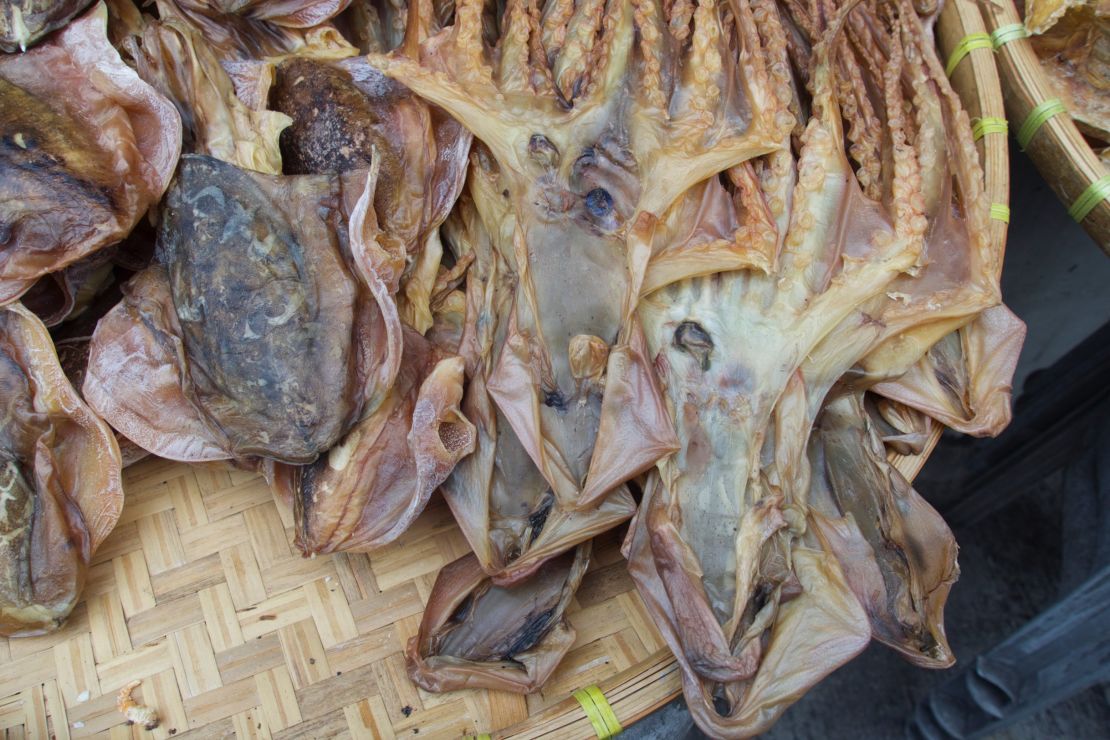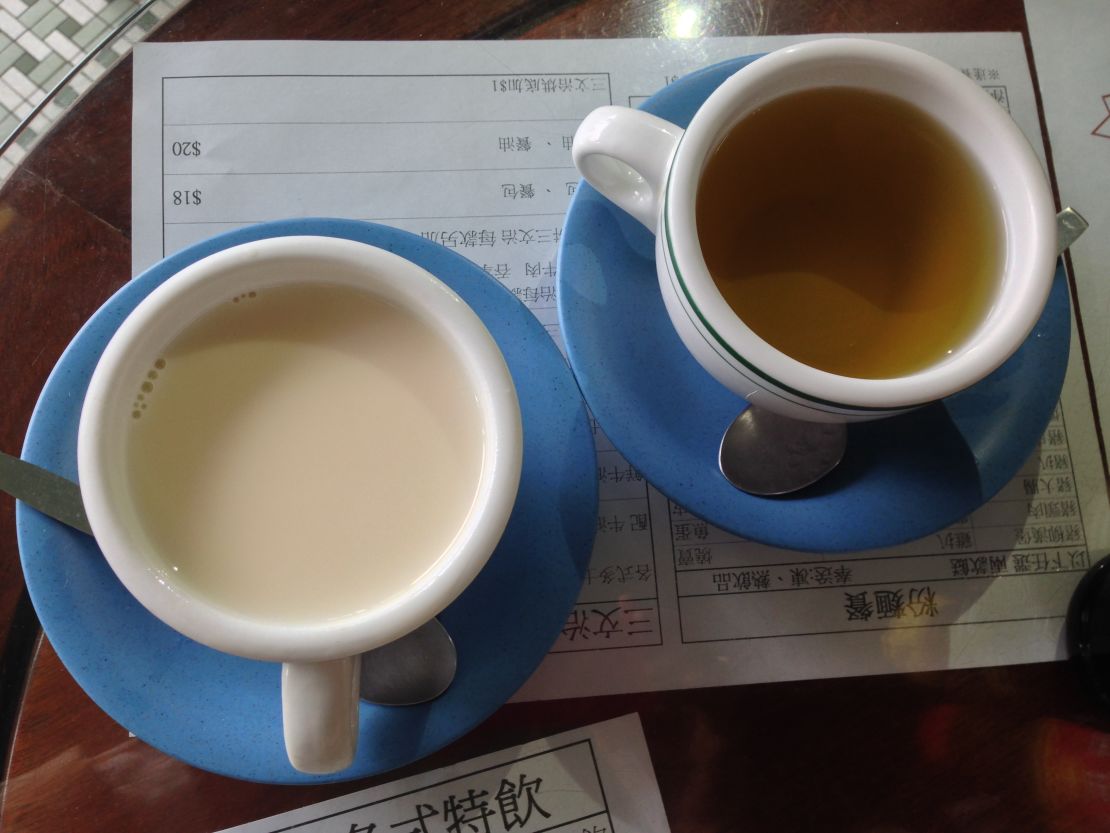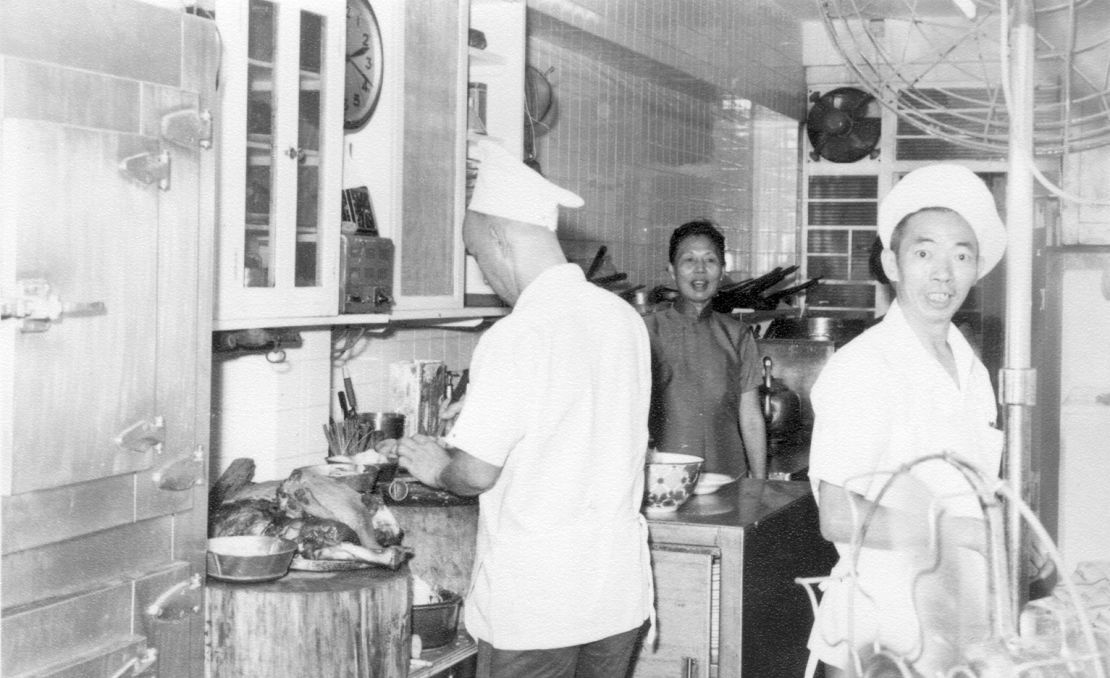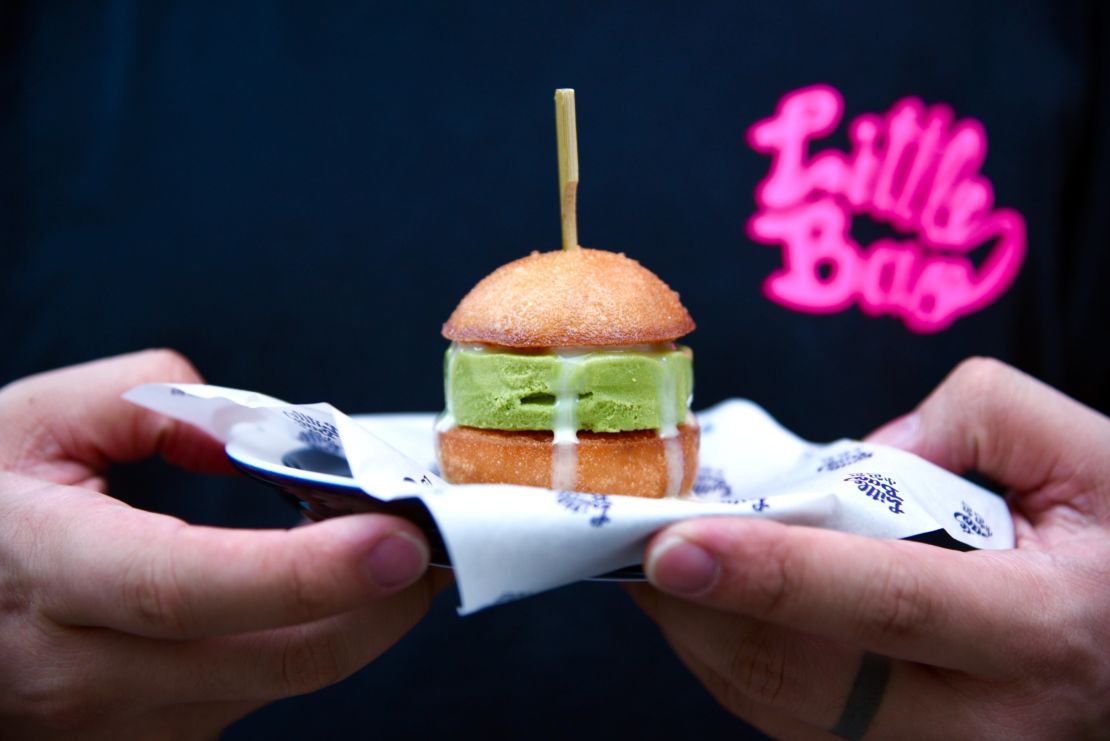Story highlights
In the shape-shifting city of Hong Kong, history comes in the form of food
Food concierge and experiential tour company Little Adventures in Hong Kong explores the territory's culinary journey
Hong Kong can seemingly transform overnight.
Shops open and close in the blink of an eye. Skyscrapers spring up out of nowhere. The skyline never remains the same for long.
Unlike cities with old bones – such as London and Paris – there aren’t as many tangible artifacts in this Asian metropolis of 8 million people.
The most reliable Hong Kong history comes not in museums or architecture, but rather, in the form of food.
“If you want to experience Hong Kong of the 1960s, you really have to look at food because it’s mainly the food that has survived intact,” says Daisann McLane, who runs food concierge and experiential tour company Little Adventures in Hong Kong.
The group’s food and culture walks take travelers into the delicious underbelly of Cantonese life – uncovering everything from cafes and bakeries to markets and tea shops.
McLane tells CNN Travel the stories behind some of her favorite Hong Kong food experiences – and what they reveal about the city’s colorful history.
Preserved in time

Before Hong Kong was a British colony, a manufacturing city or a buzzing finance capital, the territory was primarily inhabited by fishermen.
In its earliest days, before it became known as “Hong Kong,” the territory was a strategic port for European and Asian sailors – not to mention pirates – often used as a rest stop on long voyages.
The dried fish found in Hong Kong, and the surrounding region, was extremely valuable.
In a pre-refrigeration age, haam yu served as a kitchen staple, offering sustenance to sailors on long voyages and an accessible source of protein for Chinese villagers.
“Whenever I see the dried fish hanging by the side of the road – the dried fish on the red ribbons – those were one of the original products of Hong Kong island and the Pearl River Delta region,” says McLane.
“The age of sailing wouldn’t have been possible without these dried foods to keep people alive during long voyages.”
The deep-rooted industry is still omnipresent today, especially in the dried food streets in Sai Ying Pun where travelers go to get a whiff of the past.
Where to find it: To visit Hong Kong’s dried seafood trade, travelers can explore Tai O fishing village on Lantau Island or simply stroll the lanes of Sai Ying Pun, around Des Voeux Road West, Queen Street and Centre Street, where shops overflow with dried mushrooms, whole fish, sea cucumbers, goji berries and more.
Cafe society

By the mid 1950s, a lot had changed in Hong Kong.
The British having planted their flag in 1841, colonialism was well under way.
After World War II, Chinese immigrants poured into Hong Kong, fleeing the communist takeover and the Great Leap Forward famines of the 50s and early 60s.
As Hong Kong recovered from the war, it turned to manufacturing – which ushered the city into an era of development and productivity.
Factories boomed and the population swelled, just as globalization was taking hold around the world.
Coupled with an influx of factory-produced foods like white bread, peanut butter, evaporated milk and instant noodles, the factory created a unique culinary experience that encapsulates this era: the cha chaan teng diner.
“The modern Hong Kong we see today has its origins in post 50s Hong Kong,” says McLane. “And one of the major changes we see is the explosion of popularity of the Hong Kong coffee shop, the cha chaan teng. Although there were cha chaan tengs as far back the 1920s, they really came into their own in post-war Hong Kong, and are specific to that historical moment.”
“The rhythms of the factory imposed themselves on the eating culture, so you had to have fast food for these people who only had a short break for lunch,” says McLane.
At the time, you could find a cha chaan teng on every corner, serving simple white bread sandwiches, pork chops, and milk teas as the go-to snacks.
Still today, the menus are chock-full of delicious cultural amalgamations like egg tarts, Hong Kong-style French toast, and yuanyang milk tea – a mix of strong black tea and coffee.
“You can sit in a cha chaan teng and have peanut butter and condensed milk on toast, and a milk tea, and from there you can go through 75 years of Hong Kong history.”
Where to find it: Family-operated For Kee Restaurant (200 Hollywood Road, Sheung Wan; +852 2546 8947) serves up a famous pork chop bun and a taste of old Hong Kong. Hoi On Cafe (G/F, 17, Connaught Road, Sheung Wan; +852 2540 6340) is another stalwart – the 70-year-old cha chaan teng is famous for its handmade egg tarts and icy drinks.
A saucy experience

Often overlooked but essential to the Hong Kong culinary experience is Soy Sauce Western cuisine – immortalized in Wong Kar-wai’s famous film “In the Mood for Love.”
Like an upscale version of cha chaan teng dining, this hybrid dining style started booming in the 1950s and 60s.
“The elite of Hong Kong had traveled around Europe and to the UK. They came back to Hong Kong with a more cosmopolitan taste for things like steak, and wanted to eat things that reminded them of their trips,” says McLane.
Answering the call, Cantonese cooks from international hotels like the Mandarin Oriental and The Peninsula took what they knew of Western cooking and opened their own Soy Sauce Western restaurants – complete with tuxedo-clad waiters, tableside service and crisp tablecloths.
But in the process of adapting Western food for Cantonese palates, the experience became like a caricature of the real deal – not unlike eating “Chinese” food in the United States.
“For a Westerner, it’s like going to a restaurant where time stopped in 1955 because they’re still serving meat, potatoes, Cobb salads, soufflés – things you’d never see on menus anymore,” says McLane.
“In terms of culinary history, it’s a unique expression of Hong Kong people of that time, and their aspirations – cosmopolitanism.”
They may have quirks in spades, but Soy Sauce Western restaurants are becoming a rare species these days – so try one while you still can.
Where to find it: Tai Ping Koon Restaurant (21 Stanley St, Central; +852 2899 2780) serves up the best of Soy Sauce Western. Sammy’s Kitchen (204-206 Queen’s Road West, Sai Ying Pun; +852 2548 8400) is one of the great old establishments.
MORE: Hong Kong’s best dim sum
Introducing Cantonese 2.0

Hong Kong’s culinary story wouldn’t be complete without a taste of contemporary Cantonese cuisine.
Over the past five years, the Cantonese food landscape has never been more exciting.
Enter “Modern Cantonese” – a new breed of restaurants in Hong Kong that pays tribute to age-old recipes, updating them with premium ingredients, unexpected flavor combinations and playful presentations.
“You are getting this younger generation of chefs who are pushing the cuisine, rethinking it – but not making fusion food,” says McLane.
She says the movement began with Lau Kin Wai, the author, food historian and restaurateur behind Kin’s Kitchen – a Michelin-starred Cantonese restaurant – who pioneered the private kitchen scene in Hong Kong.
Innovative chefs like Lau Chun – Kin Wai’s son, who helms the kitchen – are designing small menus and resurrecting labor intensive dishes that had fallen out of fashion.
“Given that Cantonese cooking is so tradition bound, this is nothing short of a revolution,” says McLane.
“I don’t think there was any point in Hong Kong history that has been this creative and intellectually radical – unless perhaps the emergence of the modern cha chaan teng in the 1950s and 60s.”
Where to find it: Try traditional Cantonese cuisine with a modern touch at pioneering Kin’s Kitchen (5/F, W Square, 314-324 Hennessy Road, Wan Chai, +852 2571 0913).
Seventh Son (4-6/F, Kwan Chart Tower, 6 Tonnochy Rd, Wan Chai; +852 2892 2888) – a spin-off of historic Fook Lam Moon restaurant.
Hidden in a fancy basement location, Mott 32 (Standard Chartered Bank Building, 4-4A Des Voeux Rd Central, Central; +852 2885 8688) serves up contemporary art, high-quality cocktails, and Chinese food using premium ingredients.
Head to Ho Lee Fook (1 Elgin St, Central; +852 2810 0860) for inventive ingredients in a funky atmosphere.
The line at Little Bao (66 Staunton St, Central; +852 2194 0202) is worth the wait. The button-hole address offers modern fast food takes on Cantonese flavors.
Kate Springer is a Hong Kong-based freelance journalist who covers food, travel, culture, architecture and innovation for CNN, BBC Travel, Forbes Travel Guide, Fodor’s, Munchies and more. Follow along on Instagram and read more of her work here.










